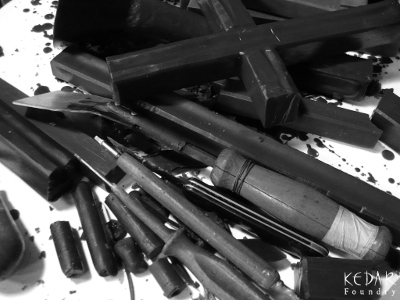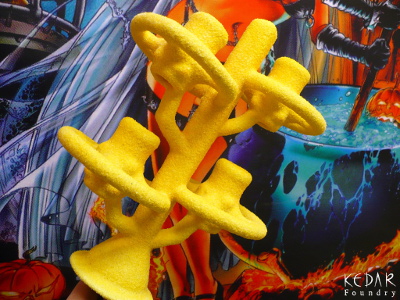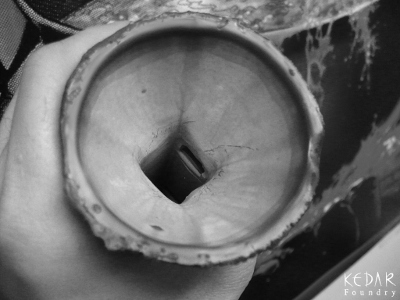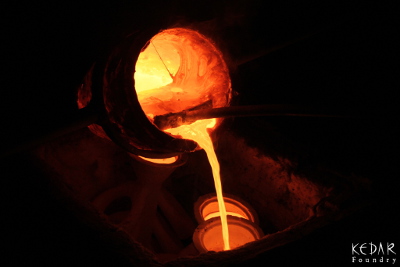



About The Lost Wax and Bronze Casting Process:
Lost Wax Casting is very old and traditional method discovered during our Ancient history in Bronze Age era, aprox 3000-1000 BC. The Bronze Age was named based on most used metal alloy in this Era - Bronze (alloy of pure Copper and other alloyings elements, especially Tin or Lead).
In darkest times before Bronze Age (Chalcolite, or Copper Age, aprox 4000-5000 BC) was Copper used mainly in pure state. Pure Copper casting characteristic predestine this metal especially for rough-shaped castings like axe, hammers etc. Low mechanical properties of cast Copper were solved with cold-hammering of working edges. This operation results in higher mechanical strength and off course longer lifetime of working edge.
The Bronze alloy could be labeled as breakthrough technology. Bronze alloys were harder after pouring and valued for golden color.


As as has been said, the Lost Wax method is in main principle very simple.
First step is making of desired item from wax. We can work with Bees wax as our ancient masters. Bees wax is still used for art casting (soft for shaping and bending).
The wax pattern must be carefully carried out including complete details of future cast. The lost wax casting has unlimited possibilities. Any thing which you can direct make from wax is possible to cast from metal (compared with sand casting etc).
The wax model is join together with specific gating system consist from pouring cup, sprues and runners. Throught this system of channels flow the molten metal during casting.


Surface of finished and gated Wax model is covered with refractory fine material. We're working with ceramic clay (for livinghistory experiments and demonstrations of ancient process), sometimes with plaster based coat and notably with ceramic slurry. Classic ceramic clay based materials are still used today for traditional Bell making (Perner Passau, Dytrychová Bells from Brodek u Přerova etc).
The wax model is completely surrounded by refractory material, the pouring mold is now finished. The main principle remains still same for thousands of Years.
The mold is letting to dry up.
Modern ceramic shell is build up during repeatedly (5-10x) dipping and sprinkling with refractory stucco. First and most important dip of wax model is called as primary coat. For primary stucco is used very fine material (about 80-100 mesh).


Now we can melt-out the Wax from ceramic mold. With assistance of external heat the wax flow out from the mold and leaves empty cavity in ceramic material. This fact gave the name for described method - The Lost Wax.
.
Next neccesary step is burn-out wax residues + chemically-bond water from ceramic mold (shell). Especially ceramic shell passes through sintering (higher mechanical properties of shell).
After burn-out cycle and preheating of ceramic shells is possible to cast different ferrous or non-ferrous alloys (bronze, brass etc).


Created with the support of W3Schools.com & Codepen.io in 2017 by






